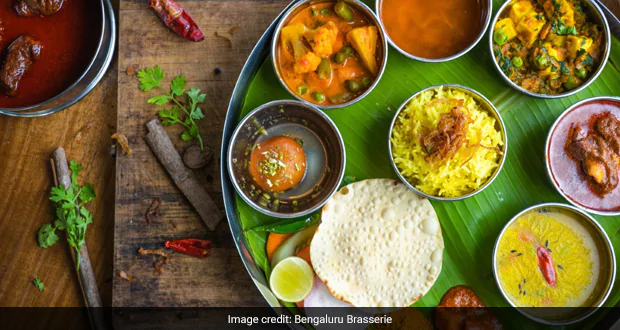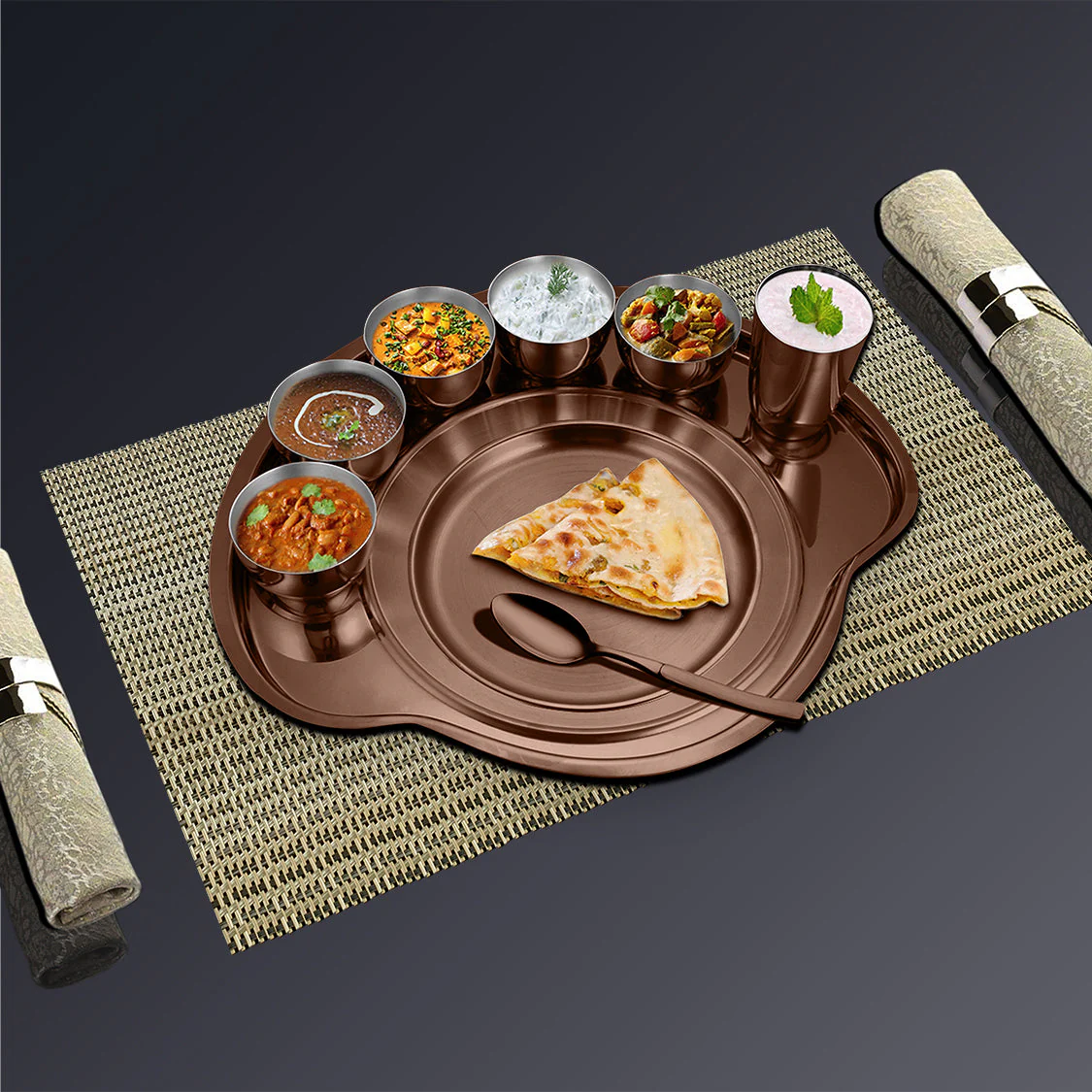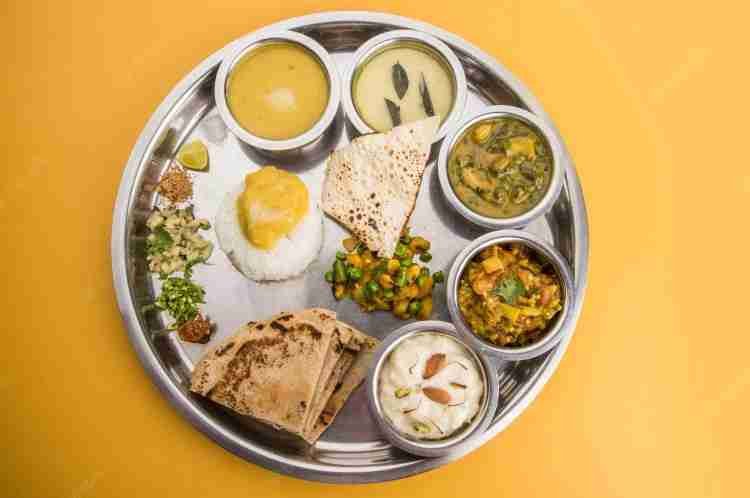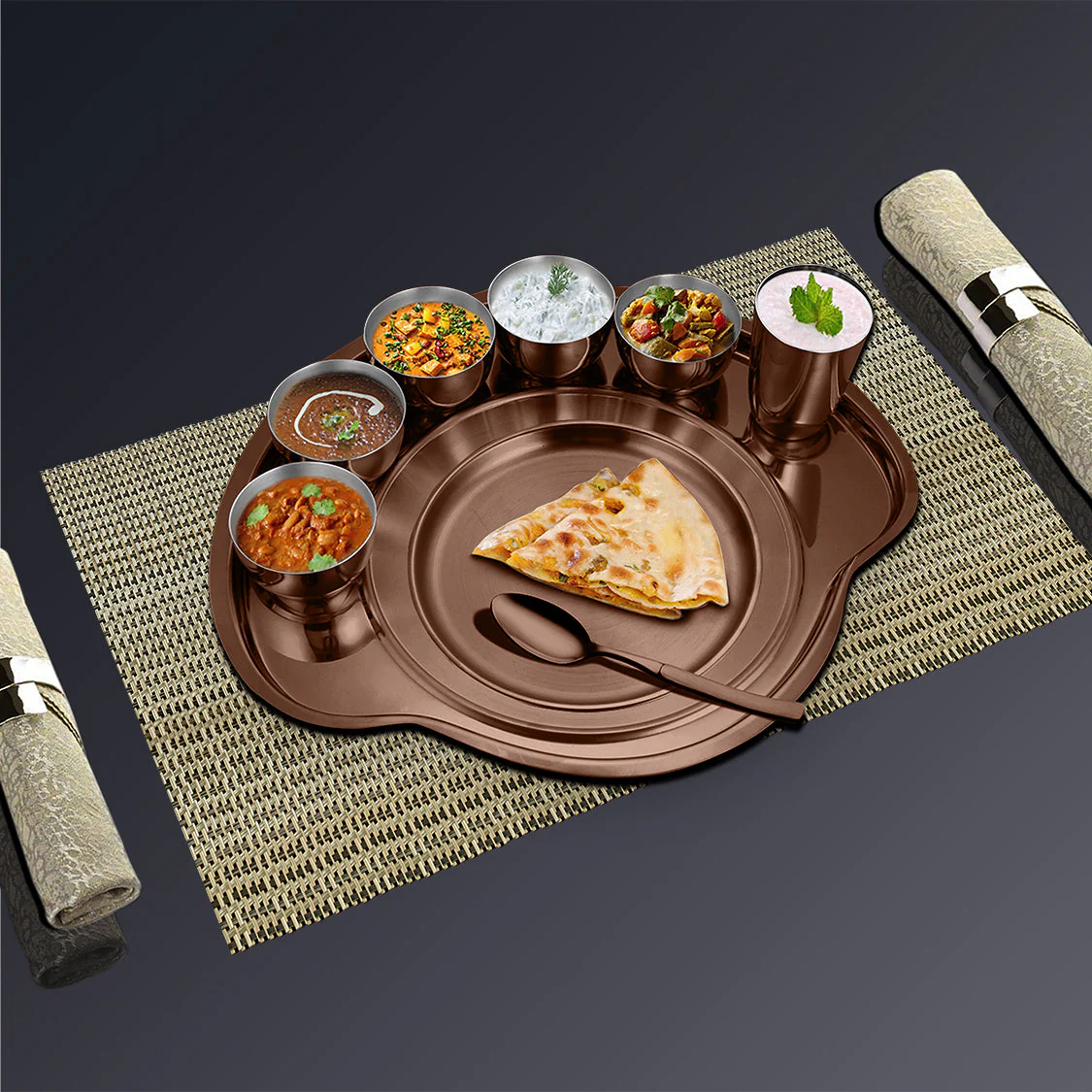In the kaleidoscope of culinary delights that India offers, the traditional Indian thali stands out as a quintessential representation of the country’s diverse flavors and rich cultural heritage.
A vibrant medley of colors, textures, and flavors, the Indian thali is more than just a meal—it’s a wholesome experience that nourishes both the body and soul.
In this article, we delve into the health benefits of indulging in these gastronomic delights, exploring why a traditional Indian thali is not just a feast for the senses but also a boon for your well-being.

1. What is a Traditional Indian Thali?
At its core, a traditional Indian thali is a balanced meal that typically consists of various dishes served on a single platter.
It is a culinary masterpiece that embodies the concept of “unity in diversity,” reflecting the varied regional cuisines and culinary traditions of India.
From spicy curries and fragrant rice to crispy papadums and cooling yogurt-based dishes, a well-rounded thali offers a symphony of flavors that cater to every palate.
2. Nutritional Diversity:
One of the foremost health benefits of indulging in a traditional Indian thali is its nutritional diversity.
Unlike many Western meals that often focus on a single main dish, a typical thali comprises a variety of dishes that incorporate different food groups.
From protein-rich lentils and legumes to fiber-packed vegetables and whole grains, each component of the thali contributes essential nutrients, vitamins, and minerals to the meal, ensuring a well-rounded nutritional intake.
3. Balanced Macronutrients:
Another advantage of opting for a traditional Indian thali is its inherent balance of macronutrients.
With a combination of carbohydrates, proteins, and fats in each serving, thalis provide sustained energy levels throughout the day while promoting satiety and preventing overeating.
Whether it’s the complex carbohydrates from whole grains, the lean proteins from lentils or paneer, or the healthy fats from nuts and seeds, a well-curated thali offers a harmonious blend of nutrients essential for optimal health.

4. Ayurvedic Principles:
Central to the concept of traditional Indian thali meals are the ancient principles of Ayurveda, the holistic system of medicine that originated in India thousands of years ago.
According to Ayurveda, a balanced meal should incorporate all six tastes—sweet, sour, salty, bitter, pungent, and astringent—to promote harmony and balance within the body.
By integrating a diverse array of flavors and ingredients, a traditional thali adheres to these principles, supporting digestive health, enhancing metabolism, and fostering overall well-being.
5. Portion Control:
In a world plagued by the epidemic of overeating and portion distortion, the concept of portion control is more relevant than ever.
Traditional Indian thalis offer a convenient solution to this problem by providing pre-portioned servings of various dishes on a single platter.
This not only helps in regulating portion sizes but also encourages mindful eating, allowing individuals to savor and appreciate each component of the meal without overindulging.
6. Culinary Heritage and Cultural Connection:
Beyond its nutritional benefits, indulging in a traditional Indian thali is also a journey through India’s rich culinary heritage and cultural tapestry.
Each region of India boasts its own unique thali, showcasing indigenous ingredients, cooking techniques, and flavor profiles that have been passed down through generations.
By partaking in these culinary traditions, individuals not only nourish their bodies but also forge a deeper connection with the cultural roots and traditions of India.
Conclusion:
In conclusion, the traditional Indian thali is much more than just a meal—it’s a celebration of flavor, nutrition, and cultural diversity.
From its nutritional diversity and balanced macronutrients to its adherence to Ayurvedic principles and emphasis on portion control, a well-crafted thali offers a plethora of health benefits for both body and mind.
So, the next time you sit down to enjoy a traditional Indian thali, savor each bite not just for its taste but also for the nourishment it provides to your body and the cultural heritage it represents.

FAQs:
Q1. Are traditional Indian thalis suitable for vegetarians and vegans?
A1. Absolutely! Traditional Indian thalis offer a plethora of vegetarian and vegan options, with a wide variety of dishes made from lentils, vegetables, grains, and dairy alternatives like coconut milk or tofu.
Q2. Can I customize a traditional Indian thali according to my dietary preferences or restrictions?
A2. Yes, many restaurants and home cooks offer customizable thali options, allowing you to choose dishes that align with your dietary preferences or restrictions, whether it’s gluten-free, dairy-free, or low-carb.
Q3. Are traditional Indian thalis spicy?
A3. The level of spiciness in a traditional Indian thali can vary depending on the region and personal preference.
However, many dishes are seasoned with aromatic spices that enhance flavor without necessarily making them overly spicy.
Q4. Are traditional Indian thalis suitable for weight loss?
A4. When consumed in moderation and as part of a balanced diet, traditional Indian thalis can certainly be incorporated into a weight loss regimen.
Opting for lighter dishes, controlling portion sizes, and balancing macronutrients can help support weight management goals.
Q5. Can I find traditional Indian thali meals outside of India?
A5. Yes, traditional Indian thalis have gained popularity worldwide, and many Indian restaurants offer authentic thali experiences outside of India.
Additionally, home cooks and food enthusiasts often recreate thali meals, bringing a taste of India to kitchens around the globe.
